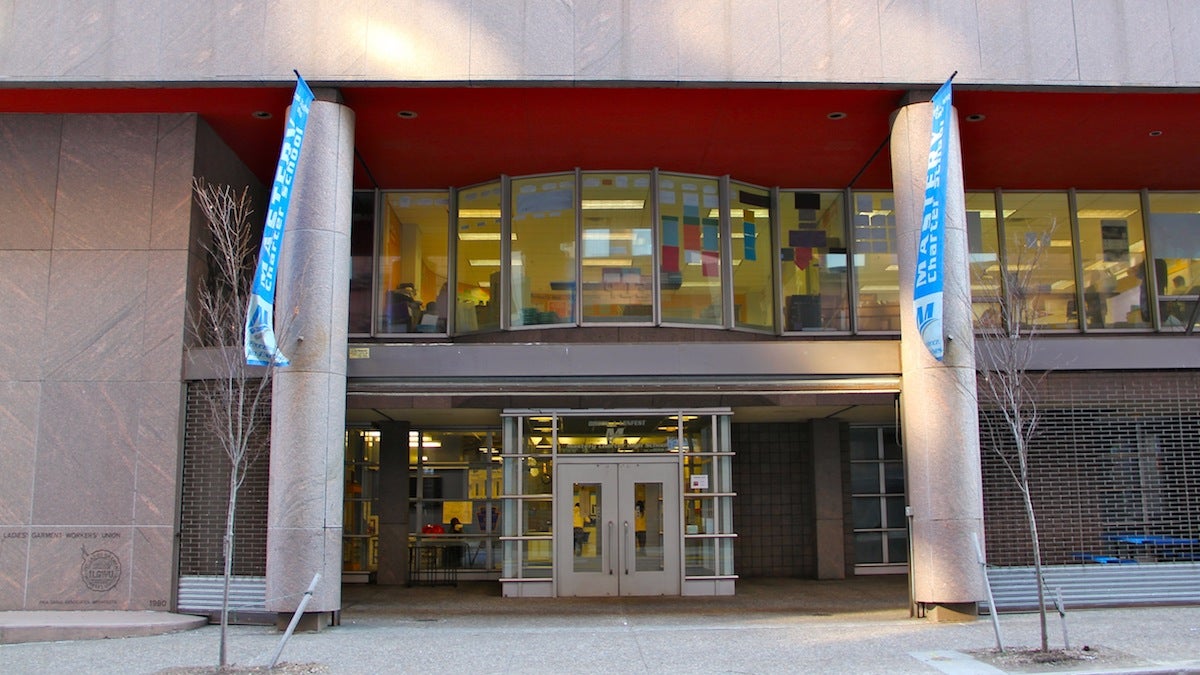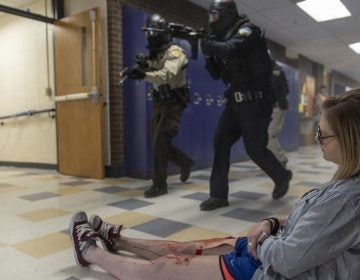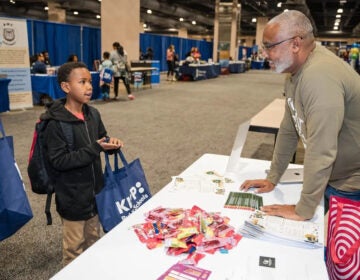The charter bump: Philly researcher finds charters boost public schools … in NYC

Mastery Charter High School at 35 S. 4th Street. (Emma Lee/ WHYY)
When charter schools move into a neighborhood, people often wonder what will happen to the traditional public schools nearby.
Will they flounder? Will they close?
How about … neither?
According to a new study by Temple University professor Sarah Cordes, traditional public schools in New York City actually improved when a charter school set up shop close by.
And the closer the charter, the better the traditional public schools performed. Schools that shared buildings with charters saw the biggest gains.
Be warned, Cordes said, her study shouldn’t be used to justify unchecked charter expansion in other cities.
“I would say mapping this onto Philly probably isn’t appropriate for a lot of reasons,” she said.
For starters, New York has proportionally fewer charter schools. Only about a tenth of the city’s public school students are in charters, compared with about a third of Philadelphia students.
Cordes said the results could look “pretty different” in a city where mass charter migration has caused public school districts to downsize.
“It could be that there gets to be a point where the charter sector is so big it becomes harmful,” she said.
New York also has better charter oversight than most cities, she said, and a state funding formula that limits damage to traditional public schools from falling enrollment.
All those caveats stated, Cordes’ study does suggest that — at least in limited doses — charter schools can do what many hoped they would when introduced a couple decades ago. Namely, it indicates charters might, by their mere presence, spark competition and inspire public schools to perform better.
Cordes’ study doesn’t nail down why public school test scores went up and the numbers of students held back went down, but the professor has some guesses.
In addition to the competition theory, Cordes said the small enrollment losses caused by nearby charters might actually help because the losses reduced class sizes and increased per-pupil spending. She also said she believes it’s possible traditional public schools picked up on innovative practices implemented by nearby charters.
“Both teachers and parents report higher student engagement after a charter school opens,” Cordes said. “So it may be that there’s something changing in terms of public school practices in response to these charter schools.”
The traditional public schools in Cordes’ study did not register massive improvements. Math and English language scores on standardized tests improved by 0.02 standard deviations when a charter school moved within one mile of a traditional public school.
For some context, Cordes compares those to the type of gains a school might expect if it implemented a proven strategy such as smaller class sizes. The charter effect was somewhere between one-tenth and two-fifths as powerful as reducing class size, Cordes said, depending on the proximity of the charters.
But, she noted, that’s not a “trivial” boost considering that nothing was changing about the traditional public schools themselves — save for the fact of a new school nearby.
And when that new school was literally in the same building as a traditional public school, the academic gains were especially impressive. Math and English scores rose 0.09 standard deviations and 0.06 standard deviations respectively when public schools cleared out space for a charter co-tenant.
The practice of charters and traditional public schools sharing space — known as co-location — has inspired much debate in New York City. In Philadelphia, charters have moved into closed public school buildings, but they typically don’t co-locate.
The practice is, however, allowed. Cordes thinks Philly could at least consider the option, which she believes could be preferable to closing half-full public schools. The school district has shuttered more than two dozen schools in the last decade.
“I think, if done carefully, [co-location] might be a solution that’s preferable to closing schools,” she said.
WHYY is your source for fact-based, in-depth journalism and information. As a nonprofit organization, we rely on financial support from readers like you. Please give today.





